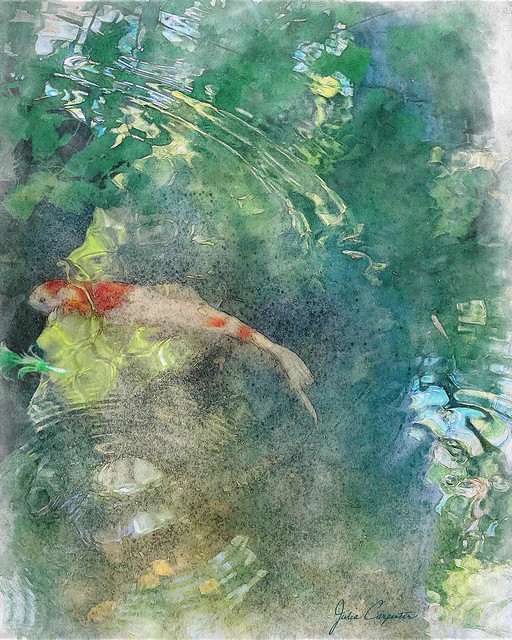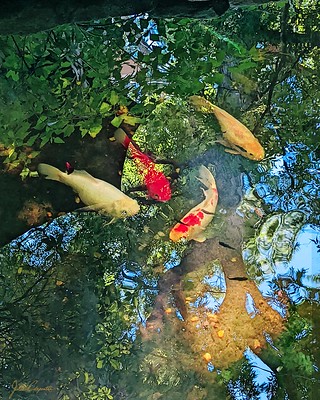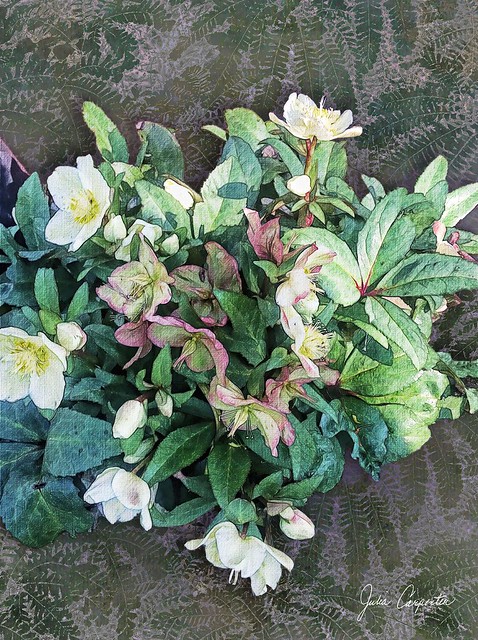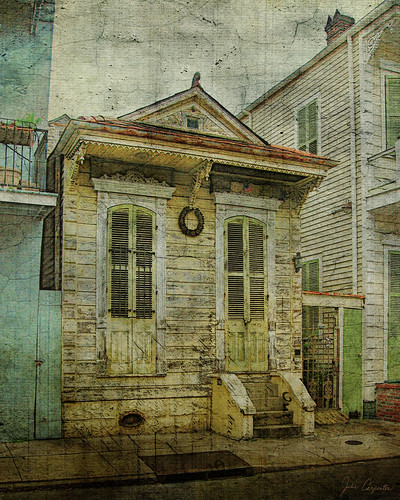Landscapes, flowers, nature seem to be my natural
digital subjects. But there is always the internal exhortation to
try something different, especially when admiring what other digital
artists are doing with the human face and figure. For more
inspiration, I also collected a Pinterest board of women's images in
various artistic styles. Yes, I could do this!
I began by extracting the woman from the background in a Pixabay image by Pat La Paz and giving her a painterly look with
Impression in Topaz Studio 2. On my photo of the flowers taken at
the Dallas Arboretum, I used copies with Akvis Sketch and Topaz
Impression, as best I can remember, since those initial steps were
many days and layers and blends modes back at the beginning of the
month. Then more blend modes and layer masks to incorporate the woman
with the flowers. Plus some background textures from Kirsten Frank.
And then? Frustration! I thought I knew the sort of
elements I wanted to add to complete the composition, but nothing
worked, nothing looked right. I returned again and again to study
other images, to try to plumb their secrets and apply similar effects
to mine. And here is where I began to think of the analogy of making
a dress without a pattern.
It seemed to me that this was akin to seeing several
beautiful dresses and deciding that I wanted to make a similar one.
Not an exact copy of any one of them, but something with the same
sort of skirt as this one and bodice like that one and sleeves from
another. Only there was no such thing as a pattern to show me how to
cut it out and construct it. Even as a very experienced sewer, I
still need a go-by, especially when trying to make a complex garment.
Alas, there was no pattern for what I wanted to do digitally.
Of course, Sebastian Michael's excellent PhotoshopArtistry and Awake: Photoshop Mastery Edition courses contain a
wealth of how-to information as well as inspiration. And if specific
help is needed, a quick search will turn up a variety of YouTube
videos (thanks to which I finally succeeded in painting a new hairdo
on the model). But all this instruction then has to be applied to
something unique: one's very own creation, like that hypothetical
hybrid dress.
Eventually, with the addition of a butterfly from
Pixabay, a French letter from the Graphics Fairy and a château from
one of my own photos, I declared La Belle aux Fleurs finished. And
I'm ready to try another. And another. Just as, over the years, I
sewed and sewed until I had an easy confidence in my garment-making
skills. I may still need that pattern when making a dress, but I no
longer have to rely on it completely or follow it exactly. In fact,
the more I have learned to go beyond the pattern, the more my
satisfaction in sewing has increased. I only hope it won't take me that long to reach the same point in digital art.














































